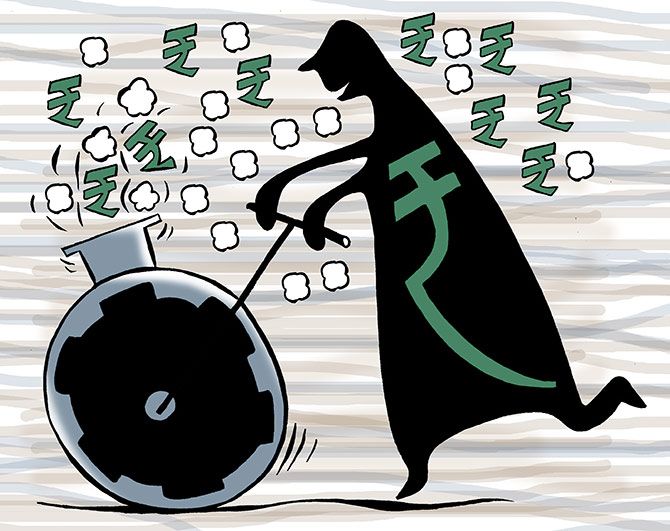From filing 37 returns a year when the Goods and Sales Tax was first introduced in July last year, the process has undergone major changes as the GST Council considered and implemented various models to ease the pain for assessees.
Here’s a recap of how the process has changed in 10 months.
Illustration: Uttam Ghosh/Rediff.com.

Original Model
Three forms are to be filed in a month apart from one additional annual return. Which means a total 37 returns are to be filed in a year.
GSTR1 is to be filed by the seller by the 10th of the subsequent month. This gets auto-populated to the buyer, who corrects it, and then files GSTR2 by the 15th of the month. After that,
GSTR3 contains the tax liability of an assessee as the seller, and input tax credit as the buyer. So, the assessee can net the two.
For the first quarter (July-Sept, 2017), GSTR3B, the summary of input-output, is to be filed by 20th of the next month, instead of GSTR3.
Present system
After the GST filing got complicated, GST Council suspended GSTR2 and GSTR3.
It extended GSTR3B first till December 2017, then till March 2018, and then till June 2018. Now it has been extended further.
GSTR 3B is to be filed by 20th of the subsequent month.
The deadline of GSTR1 was extended to 40 days from the end of the month of transactions. This timeline, however, again is being shortened in a phased manner.
A group of ministers was constituted under Bihar deputy chief minister Sushil Modi to suggest new models based on the suggestions of Infosys chairman Nandan Nilekani and the officers’ committee.
Nilekani's Model
The seller will upload invoices and the buyer will acknowledge that.
Input tax credit will be available to the buyer on the basis of invoices uploaded by the seller. No credit for missing invoices
Officers' Model
Similar to the Nilekani model but with an option for provisional credit for missing invoices.
If the seller disputes the transactions, provisional credit will be reversed.
New model approved by GST Council
First stage
The present model of GSTR1 and GSTR3B will continue for six months with the timeline for GSTR1 shortened.
Second stage
The seller will upload invoices. But, provisional credit will be allowed to the buyer, based on his/her calculations, even if the seller does not upload related invoices.
GST Network will keep sending reminders to buyers about the difference between credit available to them and input tax credit they got. A buyer then can ask the seller to upload remaining invoices as well.
Assesses will have to file one return in a month, except for those who have no transactions or those who are under the composition scheme as they will file quarterly returns.
Third stage
There will be no provisional credit. Credit will be based on invoices put up by the seller.
The government will recover the tax from the seller and in extreme cases where the seller is not located or he/she does not have assets, the buyer will have to pay taxes.
Other processes will be the same as in stage two.
With inputs from EY India
GST: India's biggest tax reform

